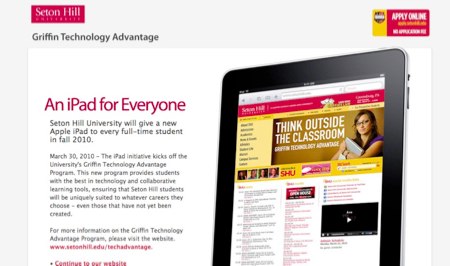iPad Writing
Stacey Mason

The iPad has been heralded as the savior of newspaper and magazine publishing, but much of the hype has been focused on consumption of media, not creation. Indeed, the input methods for generating substantial quantities of text on the go seem cumbersome.
Tablet computing pioneer Gene Golvochinsky examines the tablet computers of 1999, which were heavily dependent on a stylus, and compares the iPad’s touch controls. He concludes that the stylus is superior for applications that simulate digital ink, while the fingers are great for manipulating data once it exists.
For writing on the go, having the keyboard input (external and screen-display), stylus input, and touch input would be ideal. I can imagine a word processor that would let the user type in text with the keyboard, edit with a stylus, and highlight, cut, or move text as—well as inserting links and other forms of media—with the fingers.
The closest I have seen to this ideal is the demo of SketchNotes that Golovchinsky references, but as he notes, the motor control over the touch-input markup is noticeably inferior to that of the stylus.
Responding to a recent Seton Hill initiative to give every student an iPad , he also reports that the iPad is also not capable of multi-tasking—like running reading and writing programs at the same time—so the iPad may prove to be less desirable than a laptop for many students. (Of course, most students will also have a laptop, too.)
